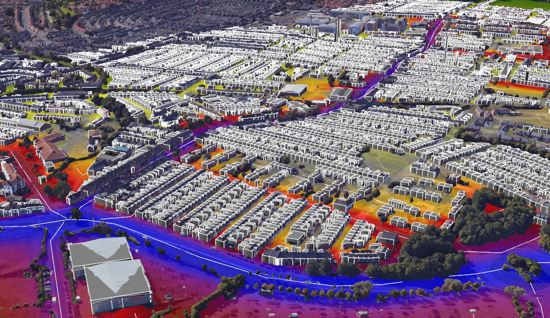
Innovative ways to reduce odour in the environment
Contacts
For more information please contact:
Odour can be more than just a nuisance for those near to the source if not effectively dealt with. We are using innovation to produce a highly effective odour control system.
We are designing the first carbon and ultra violet light (UV) odour control unit (OCU) in a waste transfer station (WTS) in the UK. A handful of similar systems have been installed on other sites in the UK, for example anaerobic digestion and food processing, however, never for a WTS. The design solution combines the industry standard of activated carbon filters, with innovation in the form of UV lamps to minimise the amount of odour released from the WTS.
The system designed includes the ColdOx UV system developed by CentriAir, followed by activated carbon beds, to reduce the odour being emitted from the WTS. In the ColdOx system, the Volatile Organic Compounds (VOCs) responsible for odour are oxidized by means of high intensity UV light. Using this system alone, the odour reductions are typically in the region of 85-95%. Although the ColdOx system in itself, with UV, gives a high efficiency, incoming loads and performance demands may at times be difficult to handle. But when ColdOx is then installed in combination with an active carbon filter, it adds a second stage that offers complementary treatment of the gas. Odour removal rates around 98-99% are often achieved with this combination, thus the odour is essentially completely removed.
There are several advantages to this system over the industry standard, which include:
- high and stable performance on reduction of odours
- system in modular design that can easily be adapted to customers specific needs
- very high reliability and operator uptime
- oxygen free radicals that do not react with VOCs, will reactive carbon, allowing for a much longer carbon filter service life
- relatively low investment and operation costs
- predictive and easy maintenance
- low footprint/minimal space requirement.
The system doesn’t only remove odour, it is also effective in removing particulates through the use of the front end particle filter, nitrogen oxides (NOx), sulphur oxides (SOx) and bioaerosols (which are produced in the breakdown of organic matter such as food), all of which are pollutants produced at a WTS.
Our Air Quality team is experienced in odour modelling across the UK and were able to model the amount of odour being emitted from the WTS, using the reduced odour concentration. The results predicted that, due to the low concentration being emitted from the WTS, the scheme was not expected to cause any significant impacts at adjacent residential locations, some as close as 20m from the site boundary. Understanding the efficiency of this technology will be crucial in undertaking our future assessments and will allow the team to provide clients comprehensive and cost-effective services.
- Share
Contacts
For more information please contact:
You may also be interested in








